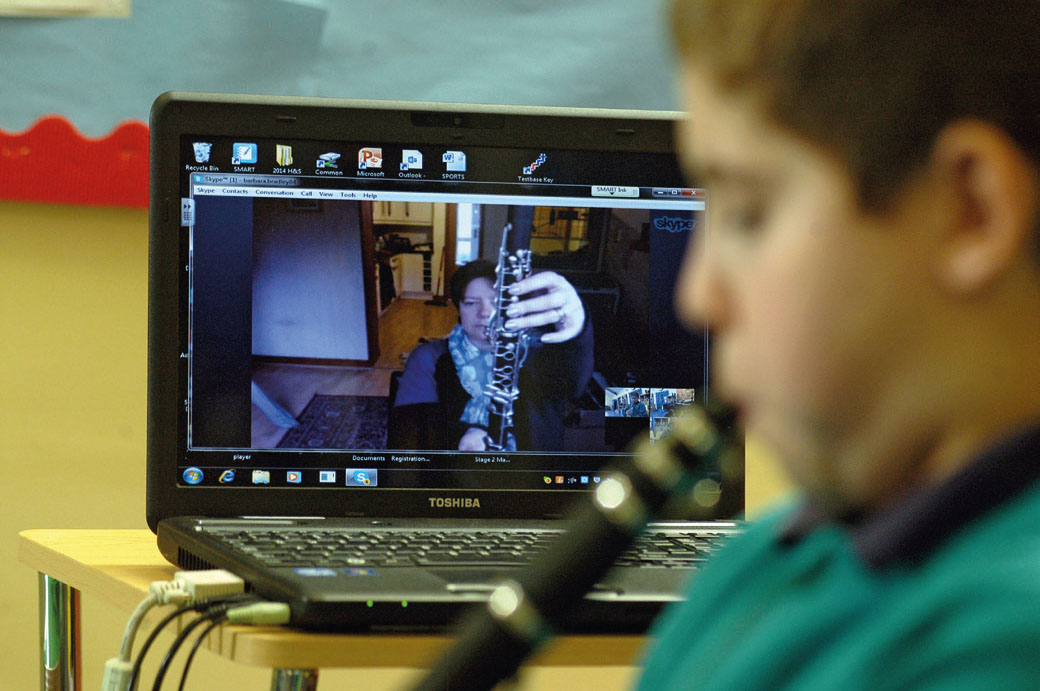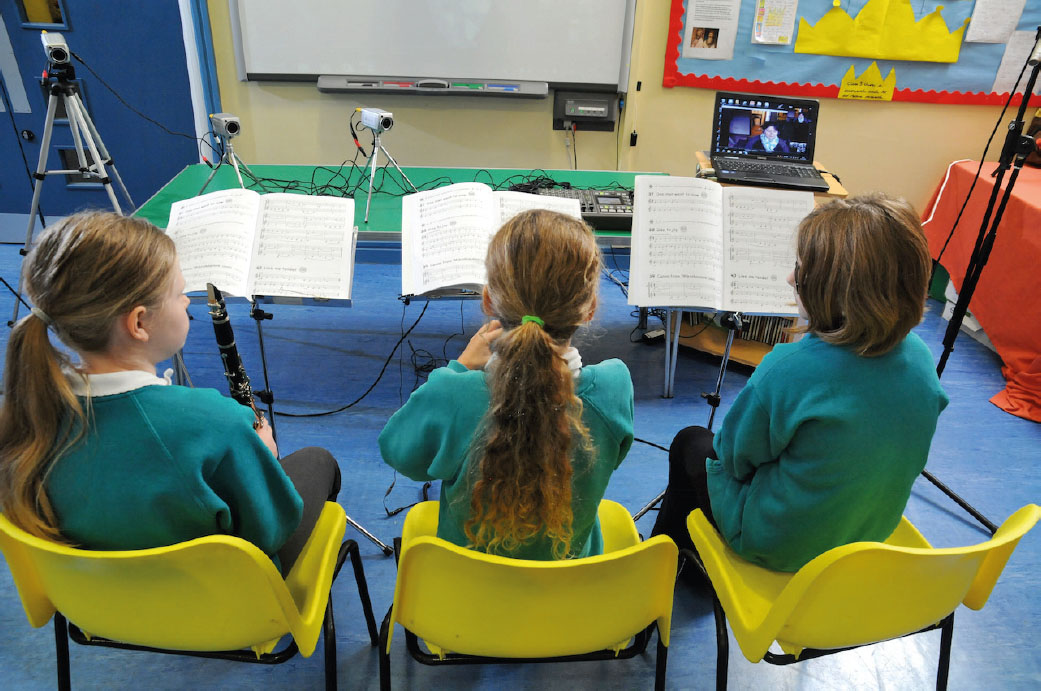
The wild and windswept moors of North Yorkshire are a long way from the traffic-choked streets of Croydon. The life experiences of a child at school in a remote part of England are far removed from those of a young person from Afghanistan or Eritrea who arrives, alone, in the UK. Music educators have been exploring the possibilities offered by online remote learning to reach such disparate pupils. Work in rural communities has shown that this approach can bring musical opportunities to young people who would otherwise miss out. Now a new project aims to bring the same opportunities to other hard-to-reach groups.
The North Yorkshire Youth Music Action Zone (NYMAZ) Connect: Resound project has been offering online remote learning for several years and has plenty of expertise to share when it comes to tackling inequality in music provision.
‘We began our research project in 2014, using funds from the Digital Research and Development Fund for the Arts, which brought together researchers, technology experts and arts organisations. We worked with North Yorkshire schools to see if this approach worked,’ says NYMAZ's digital project manager, Emily Penn. ‘We found that it did, and also really honed our use of technology to make the experience the best it could be for the learners and teachers.’
Recently, NYMAZ has secured Arts Council funding to bring four music hubs into the Connect: Resound project: East Riding, Cumbria, Durham and Cornwall.
Closing the distance
Giles Woolley is a Falmouth-based musician and educator who worked with Connect: Resound. He led a ten-week band project for young people in the Isles of Scilly without having to leave his home studio.
‘We used Skype – at either end we had a mixing desk for the four video cameras we were using, so we could switch cameras in order to focus on different things,’ he says. ‘Alan Cameron, who is a distance learning pioneer – he has been involved since the eighties – gave me a really important piece of advice: you need to make sure your preparation is absolutely spot on.’ Woolley certainly took this on board.

Technology builds bridges to those in need
Multiple cameras enable the tutor to correct posture and finger position
‘The students told me their favourite pop tracks. I re-recorded all the tracks separately and scored or tabbed all the parts: piano, drums, guitar. I sent it all over beforehand, and when it came to an actual Skype lesson, I could ask them to read or listen to any file whenever it was needed.’
The biggest technical problem in distance learning is latency, says Woolley. There is no way to avoid it and it makes it impossible for the teacher to play along with the pupils. He explains how he works around it. ‘Again, it's the preparation. I make sure the students have backing tracks ready to go, and then they trigger them at their end.’
With funding from the Paul Hamlyn Foundation, Connect: Resound's latest initiative is to partner with five more music hubs across England. Lincolnshire, Norfolk and East Sussex hubs face many of the same rural isolation problems as North Yorkshire and the first four hubs, and will be delivering music education to children in small village schools and at home. Jane Humberstone, of the East Sussex Music Hub, says of the project: ‘To be able to teach children in different venues simultaneously will enable isolated children to begin to learn, cut down travel time and save on costs.’
Isolation in the city
Living in an urban environment does not automatically protect young people from isolation, particularly when they have complex needs. Croydon and Surrey hubs have identified different groups of hard-to-reach young people, including asylum seekers and those receiving psychiatric care.
Graeme Smith, head of Croydon Music and Arts, has plans to work with young people whose mental health problems prevent them from accessing mainstream education. ‘We've had a lot of conversations with teachers in an alternative education setting. They have home tutors who visit children, so we're interested to see if we can use these visits to deliver music education using distance learning.’ Smith also mentions that the hub is keen to work with young people attending pupil referral units (PRUs). ‘We have several tutors who are really up for this project as they have an existing interest in special needs education.’
Surrey has some of the UK's highest numbers of young unaccompanied asylum seekers, some of whom will be working with Surrey Arts. As James Pinchen, inclusion and music programme manager, says: ‘The work will provide young people who are newly arrived, and vulnerable foreign nationals, with a series of 30-minute one-to-one instrumental or vocal tuition sessions via distance learning. The aim will be to assess the impact on their musical skills development, but also broader social and emotional impact. Young people seeking asylum can be extremely isolated; often not leaving their accommodation or seeing anyone except their key worker for days.’
Pinchen explains that although there are many factors to consider, the most obvious being the language barrier, the project places importance on what the young people themselves are interested in. ‘Students will experience a taster session where they can try out drums, guitar, bass guitar, keyboard, saxophone, music production, violin, vocals or another instrument of their choosing. They will then be able to choose one instrument, and receive a series of small group lessons, in real time via Skype.’
Though distance learning offers a range of advantages over face-to-face lessons, this does come with a few caveats. Just as with whole-class instrumental lessons, a staff member should always be present during distance learning lessons, though they would not necessarily need to be musically trained. Another issue for hubs to consider is that, while travel is no longer a problem, the planning and preparation required to run distance lessons can be more intense and time-consuming than face-to-face teaching, especially when safeguarding is being arranged. When each hub's project is completed, they will complete an evaluation process and share their findings, which will surely be invaluable in determining the future trajectory of long-distance music education.
For hubs around the country keen to get involved, a new round of applications will be opened later in 2018.




